#Growing and Caring for Maranta Leuconeura
Text
Growing and Caring for Maranta Leuconeura: The Prayer Plant
Maranta leuconeura, commonly known as the “prayer plant” or “red prayer plant,” is a popular and decorative houseplant is a stunning tropical plant that has gained considerable popularity among plant lovers.
It belongs to the Marantaceae family and With its vibrant leaves and unique leaf movements, it adds a touch of beauty and elegance to any indoor space.
If you’re considering adding a…

View On WordPress
0 notes
Text
Plant Journey: Month #1
I thought it would be fun (for me lol) to make monthly update about my plants and see how they thrive (or wither sksksksks) throught time. All my plants except for one are babies so they are still quite small!
Feel free to block the “plant update” tag!
Current care routine: watering once every 8 - 10 days. I add a few drops of a very gentle fertilizer since most of the plants are still showing signs of growth even tho we’re getting closer to winter now. I either take them to the bathroom with me while I’m taking a shower or mist them every few days to give them some humidity.
Plagues: A few fungus gnats, but they seem to be gone after a neem oil treatment. They came with one of the plants. 😒
Philodendron Pink Princess
Aka the one I wanted to love the most but that ended up disappointing me lol. She’s so UGLY!!! Right now it’s far from being pink but I have hope!! Shit, I even got a growing light just for her lmao. Since she got here she grew a new leaf (which is still tender) and seems to be in the early stage of growing another one so we shall see!
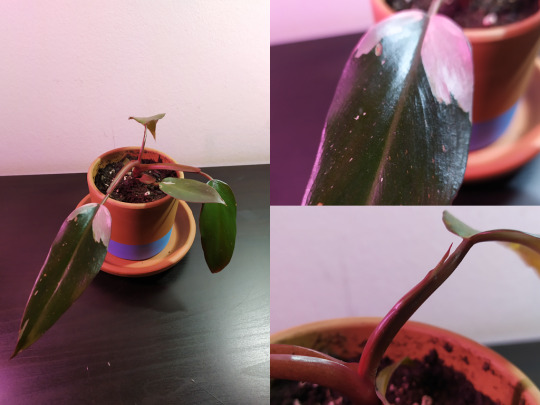
Stromanthe Sanguinea
Aka the one that was being sold as a “triostar” but then it arrived and it was clearly not lol (when I contacted the store they just claimed I got one with very little variegation which is not true but at least I got a refund). It’s not a plant I would have bought on my own but now that it’s here I can see it’s really pretty and it’ll look amazing once it gets bigger and fuller! Doesn’t seem to be growing any new leaves yet tho. Just chilling.

Stromanthe Sanguinea “Triostar”
Listen... I love her. She’s a star. 12/10. Most gorgeous plant ever. Got lots of new leaves growing and it’s already pretty big! If it dies I’ll die too!!!

Aglaonema China Red
I feel kinda bad for her bc it’s the one I pay less attention to asdfgdsa but she’s doing great on her own? She came with a purple leaf that just... fell off. She said “bye!”, detached herself from the plant and died just a few days after arriving 💀 there’s a new leaf coming in so I forgive her!!
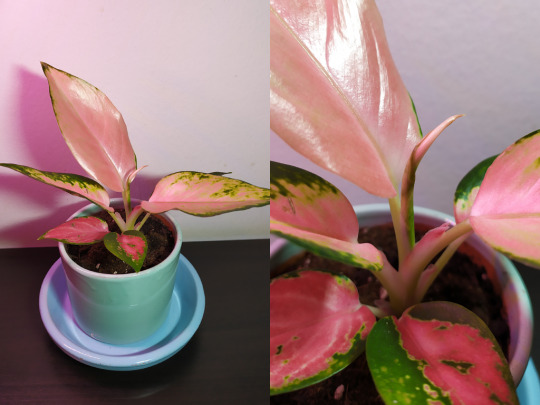
Calathea Ornata (???)
I’m not so sure what this one is since I got it today as an unexpected gift with an order I made but it’s cool! Very small, looks in good shape besides some crispy leaves lol.

Maranta Leuconeura and Aloe Vera: Coming soon, still waiting for them to arrive!
See ya next month!
34 notes
·
View notes
Text
The Ultimate Guide to Growing and Caring for the Prayer Plant (Maranta leuconeura)
Welcome to the ultimate guide on growing and caring for the Prayer Plant, also known as Maranta leuconeura. With its stunning foliage and unique behavior, the Prayer Plant has become a favorite among houseplant enthusiasts. In this comprehensive guide, we will explore everything you need to know to successfully cultivate and nurture this beautiful plant in your own home.
Prayer Plant (Maranta…
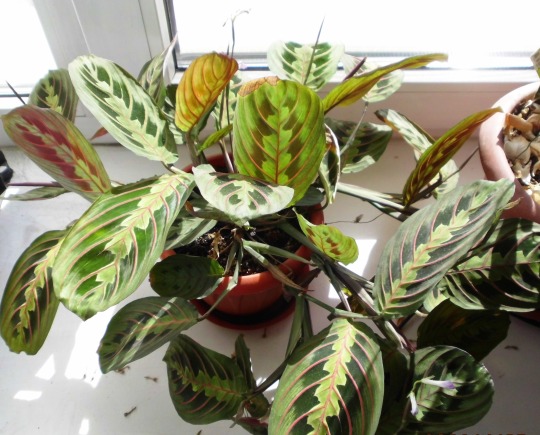
View On WordPress
0 notes
Text
Top 10 Indoor Plants That You Need to Have in Your Home
Indoor plants have the remarkable ability to breathe life into any living space, adding a touch of natural beauty and tranquillity. Whether you have a green thumb or are a beginner in gardening, incorporating indoor plants into your home decor can transform the ambience and create a refreshing environment. If you're looking to enhance your living space with the beauty of nature, here are top 10 indoor plants that are sure to elevate your home decor.
Fiddle Leaf Fig (Ficus lyrata): Known for its glossy leaves, the fiddle leaf fig is a statement-making plant. It adds a touch of elegance and drama to any room. Place it in a well-lit spot and water it regularly to help it thrive.
Swiss Cheese Plant (Monstera adansonii): The Swiss cheese plant is characterized by its unique, fenestrated leaves, resembling Swiss cheese. It is a versatile climber that can be trained to grow on a moss pole or cascade from a hanging basket, making it a striking addition to any space.
Bird of Paradise (Strelitzia reginae): The bird of paradise plant is renowned for its vibrant, tropical flowers that resemble the plumage of exotic birds. With its broad leaves and stunning blooms, it brings an instant touch of paradise to your home.
String of Pearls (Senecio Rowleyanus): If you're looking for a plant with a unique appearance, the string of pearls is a perfect choice. Its cascading stems adorned with small, bead-like leaves create an enchanting sight. Hang it on a macrame hanger or place it on a shelf to showcase its beauty.
Chinese Money Plant (Pilea peperomioides): The Chinese money plant, also known as the pancake plant, features round, coin-shaped leaves that symbolize wealth and prosperity. It is a low-maintenance plant that thrives in bright, indirect light, making it an excellent addition to any room.
Air Plants (Tillandsia): Air plants are fascinating specimens that don't require soil to grow. They can be displayed in a variety of creative ways, from terrariums to hanging planters. Simply mist or soak them in water occasionally to keep them healthy.
Peperomia: With their attractive foliage and compact size, peperomia plants are perfect for small spaces or as part of a plant arrangement. They come in a variety of leaf shapes and colours, adding texture and visual interest to your decor.
Prayer Plant (Maranta leuconeura): The prayer plant is named for its unique leaf movement, folding up its leaves at night as if in prayer. It has intricately patterned leaves with vibrant colours, making it a captivating addition to your indoor garden.
Bromeliads: Bromeliads are a diverse group of plants that offer a burst of colour with their vibrant blooms. They are known for their striking foliage and can be grown in soil or as epiphytes. Bromeliads are sure to become a focal point in any room.
String of Hearts (Ceropegia woodii): The string of hearts is a delicate trailing plant with heart-shaped leaves. Its cascading vines can grow long, making it an ideal choice for hanging baskets or trailing over shelves. It adds a whimsical and romantic touch to your home.
When selecting indoor plants, consider factors such as lighting conditions, humidity levels, and your ability to care for them. Each plant has its own requirements, so be sure to research and understand their needs.
0 notes
Text
How to Care for Prayer Plant?
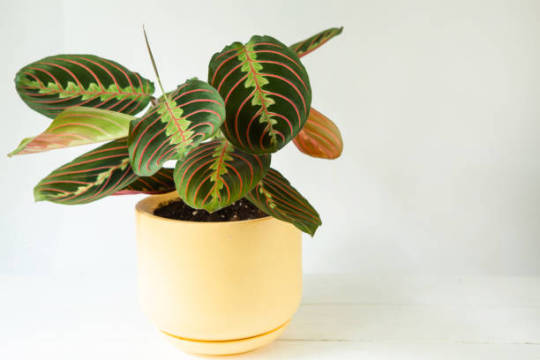
Prayer plant has one of the most beautiful leaves among plants. These tricolor leaves have a green and velvety background with yellow dots on them and red lines on all of them. If you are interested in gardening and you like to bring a colorful and beautiful creature home, then this plant is very suitable for you.
Maranta leuconeura is native to the tropics of the United States and takes its name from the 16th century physicist and botanist Bartolomeo Maranta. About 40 to 50 different species of this plant have been identified, all of which grow on rhizomes, and is a perennial, evergreen plant.
This houseplant is also known as the prayer plant because the leaves of this plant are flat during the day but gather at night and become like arms raised for prayer.
The mature type of leaves of this plant grows up to about 15 cm, which is protruded from the short stem of this plant. Although this plant is known as a houseplant, it is not easy to maintain in the long run.
Prayer Plant Light Requirements: What light is best for prayer plants?
Maranta leuconeura needs a lot of light, but indirectly. This plant should never be exposed to direct sunlight as it will burn its leaves or it may stain and the leaves may lose their color.
Prayer plant can tolerate low light conditions, but in winter this houseplant goes to rest and should be in a skylight environment.
Prayer Plant Watering: How often should you water a prayer plant?
During the growing season, i.e., from spring to early autumn, it is better to water the prayer plant regularly and do not allow the plant soil to dry out. Whenever the soil surface is drying, it is time to water it and you should not let even the soil surface dry completely.
This plant gets thirsty quickly and needs water, but on the other hand, you should also be careful about diseases and fungi, so you should not allow the leaves to get wet or the soil to be too wet. Therefore, watering is another important aspect in order to care for prayer plant.
Dehydration and overwatering can both damage the plant and cause the leaves to turn yellow or drop.
It is better to use water that has room temperature and is not cold. Also, reduce the amount of water in winter.
What is the best soil for a Maranta leuconeura?
Prayer plant likes acidic soil. An excellent soil composition for this plant includes pudding with a pH between 5.5 and 6.0 or a combination of two parts peat moss, one part clay and one part perlite or coarse sand.
Ordinary potting soil can also be used as long as it is well drained. If you feel your soil is not well drained, you can improve it by adding perlite or coarse sand to the soil. Make sure the pot has drainage holes.
Prayer Plant Temperature Tolerance
Now, we come to temperature which is assumed to be principal to care for prayer plant in addition to light, watering and soil that are mentioned above.
Prayer plant prefers to live in temperatures between 15 and 18 degrees, and temperatures below this can damage the leaves.
Prayer Plant Humidity: Does prayer plant like humidity?
This houseplant likes a very humid environment that is usually not provided indoors.
You can provide this moisture to the plant with some measures. Using a vaporizer or kettle near the plant or pouring rocks and water into the tray under the pot so that water does not come in contact with the plant provides good moisture. You can also moisten the leaves with room temperature water.
What is the best fertilizer for a prayer plant?
You can fertilize Maranta leuconeura every two weeks from early spring to mid-autumn. It is better to dilute a balanced fertilizer such as 10-10-10 fertilizer twice the product recipe.
If the amount of fertilizer is very low, the plant growth will be very slow or hard. Excessive fertilization can burn the roots, turn the leaves brown, and even kill the plant. During the winter it is better to reduce the amount of fertilizer once a month.
How to repot prayer plant?
Prayer plant does not need to repot much, but over time, its roots may occupy the entire pot and run out of space, and the plant will grow more slowly.
To repot Maranta leuconeura, you must choose a pot that is eventually 4 to 5 inches larger than the previous pot. To repot, gently remove the plant from the old pot, wipe the roots off the old soil, and place the plant in a new pot with new soil.
The best time to repot this houseplant is in early spring and before the growing season begins.
Why Are Paryer Plant Leaves Turning Yellow?
In addition to the points that we mention in the “Diseases” section, this problem is usually caused by poor maintenance conditions, fungal diseases or viruses. Often, the cause of “leaves turning yellow” is something that can be controlled, such as the location of the plant or the amount of fertilizer. But sometimes more serious action may be needed.
The first step when the leaves turn yellow is to check the amount of light and if the light reaches the plant too much, move it to a place with indirect and filtered light.
#houseplants#houseplant#houseplantcare#houseplant_care#careforhouseplants#care_for_houseplant#care_for_houseplants#care_of_houseplant#take_care_of_houseplants#takecareofhouseplants#plants#plant#polka_dot_plant#caring_for_polka_dot_plant#care_for_polka_dot_plant#take_care_of_polka_dot_plant#Hypoestes_phyllostachya#care_for_Hypoestes_phyllostachya
0 notes
Text
Prayer Plant Flowering Good Or Bad? Tips To Help Plants Bloom
Prayer (Maranta leuconeura) is native to the tropics. They require simple care even if you grow them indoors. With their vibrant foliage, they appeal to all gardeners.
During long-term care, you wonder about prayer plant flowering good or bad. Their flowers are small and fragile with purple or white colors. In spring or summer, the flowers race to grow.
So, is the care for the plant to flower…
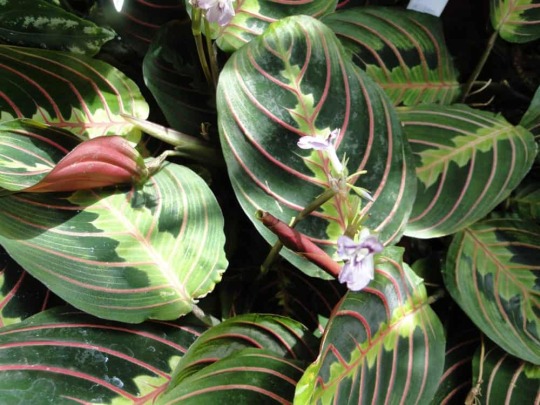
View On WordPress
0 notes
Text
Safe Aviary Plants and Toxic Plants for Birds@|what plants can i put in an outdoor aviary@|@|24
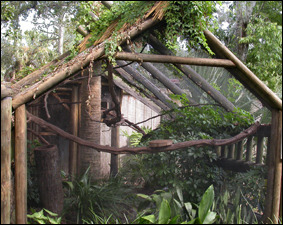
Plants not only add aesthetic value to an otherwise sterile-looking enclosure, but they also provide a more natural, engaging, and secure environment for the inhabitants to enjoy. Using plants to create visual barriers within the flight may help reduce aggression among cagemates by providing objects for the birds to hide behind.5 This in turn helps to make the birds feel more secure, and may therefore result in reduced stress levels. Foliage in the cage gives the birds something to occupy themselves with–birds often chew on, play within, and even build nests out of plants placed in their living space.
For this reason, care must be taken when selecting plants to decorate a flight. Both live and fake plants may be used, but all parts of the plant must be safe and nontoxic. The best fake plants to use are constructed of untreated silk and plastic. Make sure the silk plants do not have any components that may be easy for a bird to consume, tangle itself in, get caught on, or stuck by. Treated wood baskets and paper plants may be hazardous choices and are not recommended for decorating flights. Two benefits of using silk plants are: 1) they are not as easily destroyed by the birds, and 2) they can be scrubbed clean and disinfected as needed.
[external_link_head]
Live plants tend to demand more upkeep and may need to be replaced more frequently, as finches often love to pick them apart. Try to obtain plants that have not been sprayed with any pesticides or chemicals, and be sure to rinse the plants off before placing them in and around the flight. Do not add any fertilizers to the soil (they are toxic);6 if fertilizers are already present in the soil, repot the plant with uncontaminated soil. Leaving each plant in its pot is suggested, in case a plant dies and needs to be removed.
Helpful Hints41
Placement
Plantings should be spaced appropriately to allow room for flight paths and to permit the birds to access to the floor of the enclosure. Walk-in enclosures should also have planned pathways for birdkeeper access. Be careful to provide climbing vines with trellis to support the weight of their growth; otherwise they could break the aviary mesh and allow escape of the birds.
Selection
Aside from ensuring that the plant(s) you have selected are non-toxic, try to avoid purchasing plants which are tall and rapidly-growing as these will require constant pruning. In addition to considering what plants are best suited for your area, don’t forget to also consider the needs of the birds. Avadavats and Munias enjoy climbing small bamboos and grasses, for example, Munias and Mannikins prefer to weave their nests into grass clumps, and Weavers need palm leaves and broad-leafed grasses for nesting material.
Timing of Live Plantings
Plants should be added to the enclosure as it is being completed. The plants should be allowed to grow sufficiently before adding the birds; this way, the plants will be better able to withstand being nibbled on. Ideally plants should produce their densest foliage while the birds are nesting.
Safe Aviary Plants25,17
When choosing plants for your aviary, consult a botanist or experienced gardener who can help you select plants which are suitable for planting in your locale (considering your hardiness zone, soil type, sun exposure, etc.). Below are some options which have been listed as safe for birds.
Note: Please be aware that roses and bougainvillea have thorns.
Outdoor Plants
Trees & Shrubs
Acacia
Almond
Arbutus
Ash

Aspen
Autumn olive
Bayberry
Birch
Bladdernut
Blueberry
Camellia
Cottonwood
Dogwood
Elm
Fir (balsam, douglas, subalpine, white)
Forsythia
Fuchsia
Guava
Hawthorn
Larch
Madrona
Magnolia
Mango (zone 9+)
Manzanita
Mountain ash
Nectarine
Papaya (zone 10+)
Pear (as long as the seeds aren’t eaten)
Pine (ponderosa, spruce, Virginia, white)
Pittosporum (zone 9+)
Poplar
Pyracantha
Raspberry
Rose
Rubus odoratus
Spruce (black, Norway, red, white)
Viburnum
White poplar
Vines
Bougainvillea (can also be grown as shrub or small tree)
Grape vine
Russian Vine (Polygonum baldschuanicum)
[external_link offset=1]
Grasses & Herbs
Bamboo
Oregano
Rosemary
Thyme
Ground Cover and Short Plants
Baby’s tears aka Polka Dot Plant (Helxine soleirolii)
Chickweed
Creeping jenny (Lysimachia)
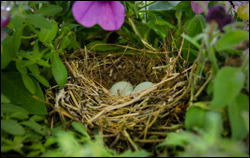
Wild passerines built a nest in a hanging petunia.
Dandelion
Marigold
Mother of pearl
Nasturtium (zone 9+)
Petunia
Piggyback begonia (Begonia hispida variant Cucullifera)
Piggyback plant
Plectranthus (zone 9+)
Sedum
Thistle
White clover
Indoor Plants (Safe Houseplants) and Tropical Plants
African violet (Saintpaulia spp., Episcia reptans)
Aluminum plant (Pilea cadierei)
Bird’s Nest Fern (Asplenium nidus)
Boston Fern (Nephrolepis exaltata)
Bloodleaf
Bromeliads
Burro’s tail
Cactus (except pencil, peyote, mescaline, candelabra)
Christmas cactus (Schlumbergera bridgesii)
Cissus: Danish ivy aka Grape Ivy (Cissus rhombifolia), Kangaroo vine (Cissus antarctica)
Emerald ripple peperomia
Flame nettle (Coleus sp.)
Gold-fish plant
Hens & chickens
Lipstick plant
Madagascar jasmine
Monkey plant
Nerve plant
Palms:

Potted palms provide privacy around the nest.
Areca (Chrysalidocarpus lutescens)
Bamboo (Chamaedorea erumpens)
Butterfly Cane
Canary Island (Phoenix canariensis)
Date
European Fan (Chamaerops humilis)
Fishtail
Golden Feather
Paradise/Kentia (Howea foresterana)
Parlor (Chamaedorea elegans)
Lady (Raphis excelsa)
Madagascar
Miniature Fan
Phoenix
Pygmy Date
Robelein Lady
Sentry
Wine
Peacock plant (Calathea)
Pepperomia (Pepperomia sp.)
Prayer plant (Maranta leuconeura)
Purple Passion aka Velvet Plant (Gynura aurantiaca)
Spider plant (Chlorophytum comosum)
Swedish ivy (Plectranthus verticillatus)
Wandering jew (Tradescantia sp.) including Giant white inch plant
Wax plant (Hoya carnosa)
Zebra plant (Aphelandra squarrosa)
Plants which Allow for Perching
Dwarf or Hawaiian Schefflera (Schefflera arboricola)
Umbrella tree/Schefflera (Brassaia actinophylla)
False aralia
Toxic Plants
Plant toxicosis in birds occurs if they chew on or ingest toxic plants. The toxic reaction can be due to pesticide residues on the plants, or to toxins within the plants themselves. Birds which chew on toxic plants may develop oral irritation; if they ingest enough, systemic clinical signs can occur such as vomiting or diarrhea. There is likely significant species differences in sensitivity,16 and studies are lacking. However, plants which have been reported as toxic in some birds, or which are considered to be potentially toxic include:6,25,52,29,56,16,17,28
Common Name Scientific Name Poisonous Part Symptoms Aconite Aconitum sp. all parts Agapanthus Agapanthus sp. sap Amaryllis Amaryllidaceae bulbs American yew Taxus canadensis needles, seeds Apple seeds Apricot pits Arrowhead vine Syngonium podophyllum leaves Arum Lily Arum sp. all parts Autumn crocus Colchicum autumnale all parts Avocado Persea americana pits, skin, flesh Reduced activity, inability to perch, fluffing feathers, labored breathing, rapid death, generalized tissue congestion. Azalea Rhododendron occidentale leaves Balsam pear Memordica charantia seeds, fruit rind Baneberry Actaia sp. berries, roots Bay tree Laurus nobilis Beans all types if uncooked Belladonna Atropa belladonna all parts Bird of paradise Caesalpina gilliesii seeds Bishop’s weed Ammi majus Bittersweet nightshade Solanum dulcamara immature fruit Black locust Robina pseudoacacia bark, sprouts, foliage Blue-green algae Schizophycaea sp. some forms toxic Hepatotoxic, lethal respiratory arrest. Boxwood Buxus sempervirens leaves, stems Buckthorn Rhamnus sp. fruit, bark Burdock Arctium minus Buttercup Ranunculus sp. sap, bulbs Caladium Caladium sp. leaves Calla lily Zantedeschia aethiopica leaves Severe irritation of mucous membranes, edema & irritation may take weeks to subside; severe dyspnea; severe keratoconjunctivitis if plant juices contact eyes. Vomiting, diarrhea. Camel bush Trichodesma incanum Candelabra cactus Euphorbia lactea sap Castor bean or Castor oil plant Ricinus communis beans, leaves Vomiting, diarrhea (possibly bloody), necrosis of organs (liver, spleen, lymph nodes, stomach, intestine) in mammals. Chalice vine Solandra sp. all parts Cherry bark, twigs, leaves, pits Cherry laurel Prunus laurocerasus clippings release cyanide fumes Chinese evergreen Aglaonema modestum all parts Christmas candle Pedilanthus tithymaloides sap Chrysanthemum Chrysanthemum sp. leaves, stems, flowers Clematis Clematis sp. all parts Coffee bean Sesbania sp seeds Gastroenteritis, can be fatal. Hyperthermia, hypertension, hyperactivity, seizures, tachycardia. Coral plant Jatropha multifida seeds Cowslip Caltha polustris all parts Croton Codiaeum sp. sap Crown of thorns Euphorbia milii sap Daffodil Narcissus sp. bulbs Daphne Daphne sp. berries Datura Datura sp. berries Deadly amanita Amanita muscaria all parts Death camas Zygadenis elegans all parts Delphinium Delphinium sp. all parts Diffenbachia or Dumb cane Dieffenbachia picta, sp. leaves Severe irritation of mucous membranes, edema & irritation may take weeks to subside; severe dyspnea; severe keratoconjunctivitis if plant juices contact eyes. Vomiting, diarrhea. Eggplant Solanaceae sp. all parts except fruit Elephant’s ear Colocasis sp. or Alocasia sp. leaves, stems Severe irritation of mucous membranes, edema & irritation may take weeks to subside; severe dyspnea; severe keratoconjunctivitis if plant juices contact eyes. Vomiting, diarrhea. English ivy Ilex aquafolium berries, leaves English yew Taxus baccata needles, seeds Ergot Claviceps purpurea present in poorly stored seed, silage, dog food Gangrene, hyperexcitability, seizures. Euonymus Euonymus sp. all parts False henbane Veratrum woodii all parts Flamingo flower Anthurium sp. leaves, stems Foxglove Digitalis purpurea leaves, seeds Digitalis glycoside – vomiting, bradycardia, arrhythmias, heart block Golden chain Laburnum anagyroides all parts Hemlock (poisoin and water) Conium sp. all parts Henbane Hyocyanamus niger seeds Holly Ilex sp. berries Horse chestnut Aesculus sp. nuts, twigs House plant ferns Pteris sp. Hyacinth Hyancinthinus orientalis bulbs Hydrangea Hydrangea sp. flower bud Iris Iris sp. bulbs Ivy Hedera sp. leaves, berries Jack-in-the-pulpit Arisaema triphyllum all parts Japanese yew Taxus cuspidata needles, seeds Java bean (lima bean) Phaseolus lunatus uncooked beans Jerusalem cherry Solanum pseudocapsicum berries Arrhythmias, bradycardia, heart block, severe gastroenteritis, calcification of vascular system, lungs, kidneys. May be teratogenic. Jimsonweed Datura sp. leaves, seeds Tachycardia, convulsions, death. Juniper Juniperus virginiana needles, stems, berries Lantana Lantana sp. immature berries Larkspur Delphinium sp. all parts Laurel Kalmia, Ledum, Rhodendron sp. all parts Lily Lilium sp. bulbs Lily of the valley Convallaria majalis all parts, including water housing the plant Vomiting, diarrhea, cardiac arrhythmias, bradycardia, heart block. Lobelia Lobelia sp. all parts Locoweed Astragalus mollissimus or Astragalus emoryanus all parts Hyperexcitability and locomotor difficulty. Lords and ladies Arum sp. all parts Lupin Lupinus sp. Marijuana Cannabis sativa leaves Maternity plant Klanchoe sp. Mayapple Podophyllum sp. all parts except fruit Mescal bean Sophora sp. seeds Milkweed Asclepias sp. Weakness, ataxia, seizures, cardiovascular signs. Mistletoe Santalales sp. berries Mock orange Poncirus sp. fruit Monkshood Aconitum sp. all parts Morning glory Ipomoea sp. all parts Narcissus Narcissus sp. bulbs Nightshades Solanum sp. berries, leaves Arrhythmias, bradycardia, heart block, severe gastroenteritis, calcification of vascular system, lungs, kidneys. May be teratogenic. Oak Quercus sp. Anorexia, diarrhea, small intestinal ulceration and hemorrhage, renal failure & polydypsia, hepatotoxic, can be fatal. Oleander, bay laurel Nerium oleander all parts Digitalis glycoside – vomiting, bradycardia, arrhythmias, heart block Parlor ivy Senecio sp. all parts Parsley Petroselinum sativum Peace lily Spathiphyllum sp. Regurgitation, oral pain, dysphagia and anorexia Peach pits Pencil tree Euphorbia tirucalli sap Philodendron Philodendron sp. leaves, stems Severe irritation of mucous membranes, edema & irritation may take weeks to subside; severe dyspnea; severe keratoconjunctivitis if plant juices contact eyes. Vomiting, diarrhea. Poinsettia Euphorbia pulcherrima leaves, flowers, stem, oily white sap Irritation, vesication, gastroenteritis, conjunctivitis. Poison ivy Toxicodendron radicans sap Poison oak Toxicodendron quercifolium sap Poison sumac Toxicodendron vernix sap Pokeweed Phytolacca americans leaves, roots, berries Ulcerative gastroenteritis; acute hemolytic crisis in people. Potato Solanum tuberosum skin, eyes, new shoots Arrhythmias, bradycardia, heart block, severe gastroenteritis, calcification of vascular system, lungs, kidneys. May be teratogenic. Pothos Epipremnum aureum all parts Regurgitation, oral pain, dysphagia and anorexia. Precatory bean Arbus precatoius Privet Ligustrum volgare all parts Ranunculus Ranunculus sp. sap Rhododendron Rhododendron sp. all parts Rhubarb Rheum rhaponticum leaves Rosary pea, prayer beans, Seminole beads Abrus precatorius seeds Vomiting, diarrhea (possibly bloody), necrosis of organs (liver, spleen, lymph nodes, stomach, intestine) in mammals. Sago Palm, Zamia Palm, Cycad Palm Cycad sp. Liver failure. Skunk cabbage Symplocarpus foetidus all parts Snowdrop Orinthogalum unbellatum all parts Snow on the mountain (ghostweed) Euphorbia marginata all parts Spindle tree Euonymus japonica all parts Split leaf philodendron or Swiss cheese plant Monstera sp. all parts Sweet pea Lathyrus latifolius seeds and fruit Tobacco Nicotinia sp. leaves Vomiting, diarrhea, hyperexcitability, muscle fasciculations, seizures, rapid death. Pododermatitis if bird handled by a smoker. Coughing, sneezing, sinusitis, conjunctivitis, secondary respiratory infections if exposed to cigarette smoke. Umbrella plant Cyperus alternifolius leaves Virginia Creeper Parthenocissus quinquefolio sap Western yew Taxus breviflora needles, seeds Wisteria Wisteria sp. all parts Xanthosoma Xanthosoma sp. leaves Yam bean Pachyrhizus erosis roots, immature pods Yellow jessamine Gelsemium sempervirens flowers Yew Taxus media wood, bark, leaves, seeds Vomiting, diarrhea, weakness, shock, coma, seizure, deaths from cardiac or respiratory failure.
Avian Plant Toxicology Research
Studies of plant toxicity in finch species are greatly lacking, however a few studies were done using canaries. Unfortunately, because great variation exists among species, it is not safe to assume that plants which are non-toxic to canaries are equally safe to other birds and vice versa.
[external_link offset=2]
AUTHOR(S): Arai, M.; Stauber, E.; Shropshire, C. M.
TITLE: Evaluation of selected plants for their toxic effects on canaries.
YEAR: 1992 CITATION: J Am Vet Med Assoc, 200(9), +61404532026
ABSTRACT: Leaves or fruit from 14 plants considered to be toxic to pet birds were administered by gavage to 15 pairs of canaries (Serinus canaria). Each bird was given 0.12 to 0.70 g of plant material. One pair served as a control and was given distilled water. The plant materials were flash-frozen in liquid nitrogen, pulverized, and resuspended in deionized water for administration. Of the plants tested, 5 (
oleander, lupine, foxglove, yew leaves, and dieffenbachia) were considered highly toxic and were associated with acute death of birds. The remaining plant samples (clematis, Hoya carnosa, privet Ligustrum vulgare, parsley Petrosilium sativum, cherry Prunus sp., Pyracantha coccinia, rhododendron, black locust Robinia pseudoacacia, and wisteria) caused no, or only transient, clinical illness.
AUTHOR(S): Hargis, A. M.; Stauber, E.; Casteel, S.; Eitner, D.
TITLE: Avocado (Persea americana) intoxication in caged birds.
YEAR: 1989 CITATION: J Am Vet Med Assoc, 194(1), 64-66
ABSTRACT: Following two incidents in which a pet canary and three pet cockatiels died under conditions suggesting ingestion of avocado as cause of death, an experimental study was undertaken. Avocados of two cultivars were mashed and administered via feeding cannula to 8 canaries and 8 budgerigars. Two control budgerigars were given water via feeding cannula. Six budgerigars and 1 canary died within 24 to 47 hours after the first administration of avocado.

Deaths were associated with administration of both avocado cultivars. Higher dose was associated with greater mortality. The 2 budgerigars given water were normal throughout the observation period. It is concluded that avocados are highly toxic to budgerigars and less toxic to canaries. PM findings observed in some birds included subcutaneous oedema in the pectoral area and hydropericardium.
The following study was done using just budgies:
AUTHOR(S): Shropshire, C. M.; Stauber, E.; Arai, A.
TITLE: Evaluation of selected plants for acute toxicosis in budgerigars.
YEAR: 1992 CITATION: J Am Vet Med Assoc, 200(7), 936-939
ABSTRACT: Pairs of budgerigars were given samples, by gavage, of plants considered potentially toxic to pet birds. Samples were prepared by flash-freezing and powdering fresh plant material in liquid nitrogen and resuspending the material in deionized water for administration. Of the 19 plants tested, only 6 induced clinical signs of illness; these plants included
yew, oleander, clematis, avocado, black locust, and Virginia creeper (Taxus media, Nerium oleander, Clematis sp, Persea americana, Robinia pseudoacacia, Parthenocissus quinquefolio).
The other plants tested in this study were: bleeding heart (Lamprocapnos spectabilis), privet (Ligustrum sp.), honeysuckle (Lonicera sp.), lupine (Lupinus sp.), cherry (Prunus sp.), pyracantha (Pyracantha coccinea), boxwood (Buxus sp.), dumbcane (Dieffenbachia seguine), foxglove (Digitalis sp.), spindle bush (Euonymus alatus), poinsettia (Euphorbia pulcherima), rhododendron (Rhododendron sp.), and blue elderberry (Sambucus cerulea).
Note how some plants which appear well tolerated by budgies (lupine, dieffenbachia, foxglove) prove fatal to canaries, while some plants which canaries appear to tolerate (clematis, black locust) make budgies quite ill. Until more research is done, it is important to err on the side of caution and avoid any plant which may potentially be toxic. [external_footer]
source https://livingcorner.com.au/safe-aviary-plants-and-toxic-plants-for-birdswhat-plants-can-i-put-in-an-outdoor-aviary24/
2 notes
·
View notes
Text
How to Grow and Care for Prayer Plants
Pandemic hobbies
Caring for plants can be mentally satisfying. If you like seeing growth try it! Growth with this prayer plant happens fast when properly cared for.
I just added this prayer plant 3 months ago and I already had to replanted it. I noticed the leaves go up in a prayer stands at night and relax in the morning 🙂 very nice.
S. Jones
2 notes
·
View notes
Text
TOP TEN PLANT CARE TIPS
It’s been a while since I’ve written a post about plant care, so I figured this was long overdue. My previous beginner’s guide to caring for your houseplants has some advice that I still believe to be helpful (which you can read here), but I was still pretty new to caring for plants, so I felt like I should put together an updated guide on what I find helpful today.
Remember that not all plants are the same. For the longest time, I always thought that as long as I watered my plants every day and gave them a lot of light, that they would survive. From years of experience, believe me when I say that that mindset is 100% wrong. Different plants need different amounts of water, sunlight, and even soil. Do your research on what plants you have to determine what they need to survive. You’d be surprised to know that some plants will perish if given too much sunlight and water.
Watch the leaves. Sort of building off of the first tip, watching the condition of the leaves on each of your plants can tell you a lot about its health. This might not apply to every plant out there, but for me, I usually follow this guide when it comes to watering:
Brown crispy leaves = Needs more water
Wilted or yellowing leaves = Overwatered or lacking nutrients
Black spots/holes = Sick or diseased
Growing towards your windows = Needs more sunlight
Adjust with the seasons. Just like we adapt to the weather, our plants need to as well. The amount of water and sunlight that works for one plant in the summer will not be the same in the winter.
Overwatering leads to bug infestation. The number one question I get in regards to my plants (considering I have so many) is “How do you deal with all of the bugs?!“ The simple answer is: I don’t have that problem. The more complicated answer is that most people tend to overwater their plants, leaving a puddle of still water within their pots (which is a breeding ground for gnats). Check whether or not your pots are draining properly, and if they’re not, cut back on the watering to see if that helps your bug problem.
Not too hot or too cold. I’m talking about water. You don’t want to scald your plant friends or give them an ice bath. Warm/room temperature is perfect. Like tropical rain shower temperature.
Pick the right pot. Plant pots aren’t just meant to look pretty - having the right one for your plant is actually pretty key to its survival. When picking out a pot, the first thing I do is check the bottom to see if it has a drain hole. Do all plants need pots with a drain hole? YES. Unless you’re a master of knowing exactly how much water your plant needs. When watering, I always give enough until I can see the water coming out of the bottom drain hole. This water needs to escape out of your pot, otherwise it just sits there at the bottom, rotting your roots and giving bugs the opportunity to flourish.
Repot those puppies. Weird as it sounds, my plants are my babies. I want them to grow big and strong enough to fill my apartment to jungle status. Just kidding. (Maybe.) So, rather than holding them back from their full potential by keeping them in the same pot they’ve always been in, once they start to grow, I repot most of my plants into bigger ceramic pots. As your plants age, their roots need to spread out in order to grow larger, and the only way they can do that is by having more room. If you’re wondering why your itty bitty houseplant is healthy (but isn’t growing any bigger or longer), it might be time to upgrade your pot.
Shop with your home in mind. I can’t tell you how many plant species I wish I had for my apartment. However, considering I live in a studio with medium, indirect sunlight, I know for a fact that there are certain plants that would just not work with the amount of light I have. Furthermore, I also have pets, so even though they don’t eat any of plants, I try to stay away from pet-toxic breeds or keep any of those types of plants in a place that won’t tempt them. Trust me, shopping for plants that conflict with your living situation leads to failure.
Avoid supermarket or department store plants. Honestly, you do you. If you want to buy that IKEA palm tree for $20, go for it! Though I will say, most of the time, those plants are not very healthy or treated well to begin with. You could be bringing home a sick plant that’s already on its way to the grave, regardless of whether or not you’re doing everything else right. Most of my plants come from the flea market, my family, or specialty shops where I can pester the owners with all of my questions. Knowing everything I need to know about my plant before bringing it home helps me make sure I’m caring for it properly.
Don’t get discouraged if your plant dies. First, I’d like to say that I’m incredibly proud of my 8ft. philodendron named “Planty“, my one-year-old Maranta leuconeura named “Maranta Stewart“, and an Aloe vera plant that I’ve cut down so many times when my husband gets sunburned that I’m surprised it’s still alive. Second, and I hate to admit this, but I’ve killed SO many plants over the last three years. Being a plant mom is truly trial and error for me, but it’s one of the best feelings - almost therapeutic for me in a way. If you’re determined to be a plant owner, don’t let a couple of duds gets you down. Be prepared for the next plant and try again!
xx Audrie
6 notes
·
View notes
Video
youtube
Prayer Plant (Maranta Leuconeura) Care And Growing Guide - Plant Mom Car...
0 notes
Photo

The House Plant Journal philosophy: understand your environmental conditions, try your best, and let nature take its course. . There is a tragic imbalance in the plant care approach that every imperfection has a *preventable* cause, which sends us away feeling like we failed at plant care. If you understand the kind of light your growing space gets and you know how to water, then there's no need to get hung up on yellowing leaves. Removing spent leaves is as integral a part of plant parenthood as picking up after your dog . 📷 1) Maranta leuconeura is doing very well and just a minute ago, 📷 2) I cut off several spent leaves. People would have looked at this 📷 3) and started speculating over watering or lack of fertilizer but I know there's nothing to worry about ~ ~ #maranta #prayerplant #houseplants #plantlove #foliage #indoorplants #plantlife #urbanjunglebloggers #houseplantclub #plantstyling #houseplantjournal #växtgäris #greenliving #greenery #igerstoronto #igerscanada #torontoblogger #plantcare #plantparenthood #plants #plantas #plantgoals
#plantstyling#plantcare#urbanjunglebloggers#prayerplant#plantlove#houseplantclub#plantgoals#torontoblogger#växtgäris#plantlife#igerstoronto#greenery#greenliving#maranta#igerscanada#plantparenthood#houseplants#foliage#plantas#plants#indoorplants#houseplantjournal
53 notes
·
View notes
Photo


15 Gorgeous Closed Terrarium Plants That’ll Thrive In High Humidity
1. Friendship Plant (Pilea Involucrata)
With textured, green leaves, bronze veins and dark red undersides, the Friendship Plant is a good beginner plant for those new to closed terrariums. It is an easy-care, fast-growing trailing plant that will give your terrarium an extra lush feel.
If you’re looking for a more upright species, Moon Valley will add height, but if it is getting too leggy for your liking, just pinch off the growing tips.
2. Watermelon Peperomia (Peperomia Argyreia)
A low-growing plant with round, fleshy leaves that look like watermelon skin. Since it is a tropical plant that thrives in humid conditions, it is well-suited to terrarium conditions.
The warmth of a closed terrarium is also ideal for Watermelon Peperomias as they don’t do well in cold temperatures.
3. Nerve Plant (Fittonia Albivensis)
If you’re a sucker for foliage, Nerve Plants will soon be on the top of your closed terrarium plant wish list.
Deep green leaves with white, pink or red veins, make this plant an eye-catching addition to any closed terrarium. Fittonias do bloom but feel free to pinch off any flower spikes as they don’t come close to the beauty of the leaves.
4. Baby Tears (Soleirolia Soleirolii)
This delicate plant has tiny round leaves and thin, fragile stems. For its small size, this plant needs a lot of attention – when not planted in a terrarium.
The high humidity, warmth and the fact that the plant is shielded from outside forces when in a closed terrarium, will lead to a lush green carpet of tiny leaves.
5. Golden Clubmoss (Selaginella Kraussiana)
Golden Clubmoss will add a beautiful texture to your closed terrarium. This plant will quickly form a dense mat of green, with little extra effort from your side.
Unless you’re living in the tropics, Golden Clubmoss won’t thrive outside of a closed terrarium.
6. African Violet (Saintpaulia)
African violets can be fussy; their leaves are prone to rot when kept in high humidity, which might make you wonder why they are listed here.
But these small houseplants with their fuzzy leaves and clusters of flowers actually do well in closed terrariums due to the moist soil, heat, and yes, even the humidity.
7. Polka Dot Plant (Hypoestes Phyllostachya)
This plant stands out the Polka Dot Plant is a lively and beautiful little plant with brightly spotted leaves that stand out particularly well against the green of other plants.
They’re not difficult to grow, but their one drawback is the fact that it has a short lifespan. After flowering, the Polka Dot Plant will either become dormant or die completely.
8. Ferns
Since ferns flourish in high humidity, most species will do fine in closed terrariums. The best ferns for closed terrariums are slow-growing ferns that are no taller than 12 inches at maturity.
But even if you select a larger version, through pruning or pinching off new growth, you can manage its size. Here are the two most common smaller species to consider.
- Lemon Button Fern (Nephrolepis Cordifolia)
- Maidenhair Fern (Adiantum Aethiopicum) or Delta Maidenhair Fern (Adiantum raddianum).
9. Moss
These bryophytes – meaning they don’t have regular roots, flowers or seeds – get their nutrients and moisture from the air around them.
This will be a care-free addition to your closed terrarium as these velvety cushions will get all they need from the air around them.
10. Mini English Ivy (Hedera Helix)
These hardy plants can handle a variety of conditions. You can choose between lots of types, including variegated white, gold or yellow. Ivy will climb, so you need to keep an eye on its size before it lifts the lid of the terrarium or crowd the other plants.
11. Mini Pixie (Syngonium Podophyllum)
Syngonium mini pixie is such a dainty little plant with its mini arrow-shaped leaves and interesting pattern.
The shape of the leaves changes as the plant ages, and tendrils and aerial roots will develop with time. The high humidity and warmth offered by closed terrariums are just what this beauty needs to be healthy.
12. Prayer Plant (Maranta Leuconeura)
There Marantaceae family is a large one, but there is no doubt that these plants are some of the best for closed terrariums due to their high humidity requirements. The ‘Maranta Leuconeura’ grows low to the ground, making it a great addition to any closed terrarium ecosystem.
13. Golden Pothos (Epipremnum Aureum)
Epipremnum aureum, commonly known as Golden Pothos is vine plant which will tolerate almost anything you can throw at it.
Loved for its nearly indestructible nature, the biggest worry you will have when placing Golden Pothos in a closed terrarium is managing its growth.
14. Rex Begonia
With more than 1,300 species, the genus Begonia offers a wide selection of closed terrarium plants. These plants are show-stoppers with a variety of leaf shapes, colors and sizes.
Favoring shade and humid conditions, the Rex Begonias belong on the list of best plants for closed terrariums. Just a word of caution, as with African Violets, water of leaves will lead to rot and ultimately, the death of your plant.
15. Carnivorous Plants – Venus Flytraps, Pitcher Plants, Sundew Plants
Fascinating to grow but very difficult to do so successfully – unless you make these plants part of your closed terrarium.
Carnivorous plants from North America should be selected as they’re indigenous to peat bogs and will be able to not only tolerate but flourish in high humid condition in a closed terrarium.
-----
Visit our website: https://zerowasteinitiative.com/
Source: Internet
🌳 Zero Waste Initiative - Less Trash More Life !
🌏 Let's Save The World While There's Still Time !
1 note
·
View note
Photo
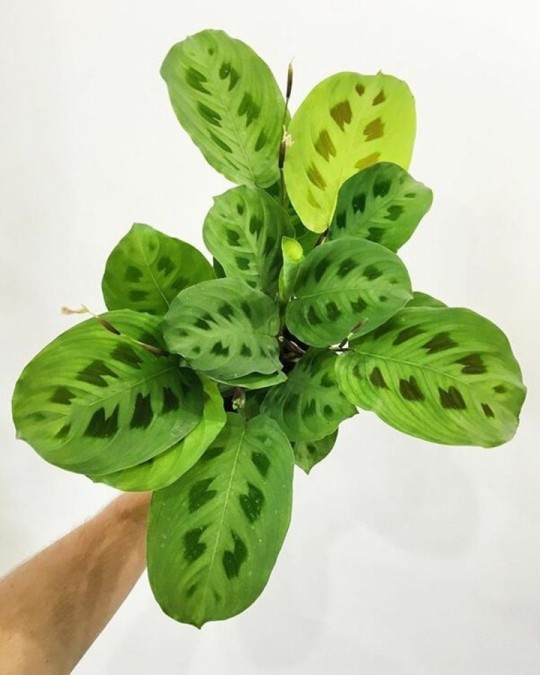
Maranta Leuconeura Kerchoveana 🌱 🎋 You can have it as hanging plant 😺 Cat-friendly 🐶 Dog-friendly 👃 Air purifier plant 🌫️ It requires high humidity, a humidifier is almost mandatory. 🍀 It has big multicolored leaves with a beautiful pattern 📏 It can grow up to 0.5 meters approx, but they become larger if they are hanging . Join the FREE worldwide community for houseplant lovers ❤️. - 👨🎓 Learn how to take care of #plants - 📸 See how the plant grows with many images - 📺 Watch tutorials - 🌱 Discover similar plants . Image by @ulistnienie 📸 . #MarantaLeuconeuraKerchoveana is an evergreen #plant with patterned leaves originally from #Brazil Rainforests 🇧🇷🌳 that is kept as a #houseplant for its attractive foliage. Also commonly known by the name #PrayerPlant because its leaves remind us to two hands praying 🙏🏻 because its leaves fold upward at night. #MarantaLeuconeura grows approx. up to 30-40cm 📏 and it gets bushy because it grows horizontally. The leaves of this #Maranta are oval in shape, colored green-grey, with darker green to brown splashes across the surface. On the other hand, these colors are not visible from the back, not even the vein arrangement. It is usually placed in the corners of furniture or in a hanging basket because it looks great with a cascade look. Everyone should have a maranta at home because they are pet-friendly 😺 and air purifier plants 👃 that improve the quality of the air. Because of this, marantas are perfects plants for bedrooms 🛏️ and living rooms 🏘️. . . #GreenPrayerPlant #PrayerPlant #RabbitsFoot #RabbitTrack #nature #plantsofinstagram #indoorjungle #green #plantsmakepeoplehappy #houseplants #catswithplants #womenwithplants #menwithplants #urbanjungle #milennialplants #plantlover #homedecor #houseplantclub #plantlife #naturelovers https://www.instagram.com/p/CCn56uNgFIc/?igshid=113lllk5kjbke
#plants#marantaleuconeurakerchoveana#plant#brazil#houseplant#prayerplant#marantaleuconeura#maranta#greenprayerplant#rabbitsfoot#rabbittrack#nature#plantsofinstagram#indoorjungle#green#plantsmakepeoplehappy#houseplants#catswithplants#womenwithplants#menwithplants#urbanjungle#milennialplants#plantlover#homedecor#houseplantclub#plantlife#naturelovers
0 notes
Text
Introducing: Crassula Ovata
I love jade plants! They likely imprinted on me early, since I was born in San Jose (although I didn’t grow up there). They, along with many of my other favorite plants, grow abundantly in containers and in the wild in Santa Cruz. Here’s one I found on my r&d trip this January at the base of a eucalyptus tree by Corcoran Lagoon:

I’ve grown them unsuccesfully a few times in my apartment and office throughout the years. Not enough light, too little water but too often... you name it. My most notable murdered jades are as follows:
1. A few years ago, I bought a larger one and kept it alive shockingly long in the mid-to-low lighting situation where my maranta leuconeura erythroneura now lives. If my cat Merkle hadn’t systematically destroyed it, I’m sure the light or my poor watering practice would have eventually. It was by the door, and when he wanted out or attention, he’d make eye-contact with me on the couch, bite off leaves, and spit them on the ground. So rude.
2. I was gifted a tiny one when I started my first job at the company I work for in 2013, and managed to keep it alive-but-definitely-not-thriving until 2019, when someone knocked it over and threw it out without my knowledge in a desk move.
The current jade I have I got in summer 2019 in a 6″ pot from CVS on my way to a friend’s house. It used to live on the junk stool I made into a plant stand by my east window, but when the cats were out I would give it the window seat. Here it is, obscured by my questionable taste in furniture, in a photo from spring of 2019:

I learned they like to be more root-bound when I started Taking Care of My Plants in spring 2020. Even so, I did decide to re-pot it. Because the grow-pot it came in was very deep, the whole thing was unstably top-heavy.
I got a 6″ terracotta “azaela pot” (shorter than normal, since I’d read they work well in shallower planting situations) and planted it in some cactus mix with a small amount of regular potting mix added. It now (6/14/2020) lives on the corner of the computer desk I built, top-dressed with my favorite smoky quartz chunks and green obsidian (and a groundscore piece of turquoise jewelry), where it gets bright direct morning light:
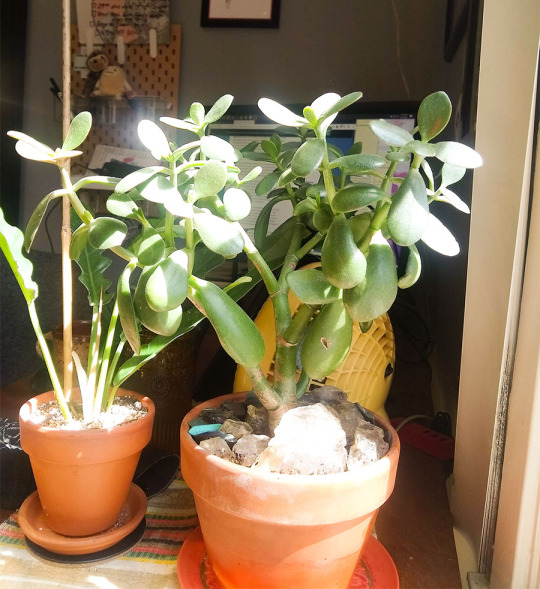
Yes, that’s a Merkle bite in that old leaf, from sometime last year. Despite its easy-reach position for the cats (it needs the light!), they leave it alone now. I suppose that’s because In My Old Age I’ve become a better cat and plant caretaker, and also because with mandatory work-from-home orders, I’m always inches away to keep an eye on them.
I got the pot from a curb-side pickup service because of the Covid-19 quarantine, and didn’t realize until too late that there’s a huge crack running along 3/4 of the middle. Oh well. The biggest problem with the crack I’ve found so far is that it makes bottom-watering difficult. Next growing season I might swap out for a new pot, but this plant has been so happy I don’t want to touch it until it needs something.

Since I started taking care of it better this year (understanding watering/light needs, cleaning off its leaves, rotating it every few weeks for even growth), it not only hasn’t lost any more bottom leaves, but it’s been constantly growing new leaves and branches. I’ve gotten at least an inch of growth on every branch so far this growing season!
I just watched an instructional video on pruning and shaping jades, which is food for thought. For now, I’m just happy I’m understanding better how to keep it happy, and want it to just keep doing its thing and getting bigger.
0 notes